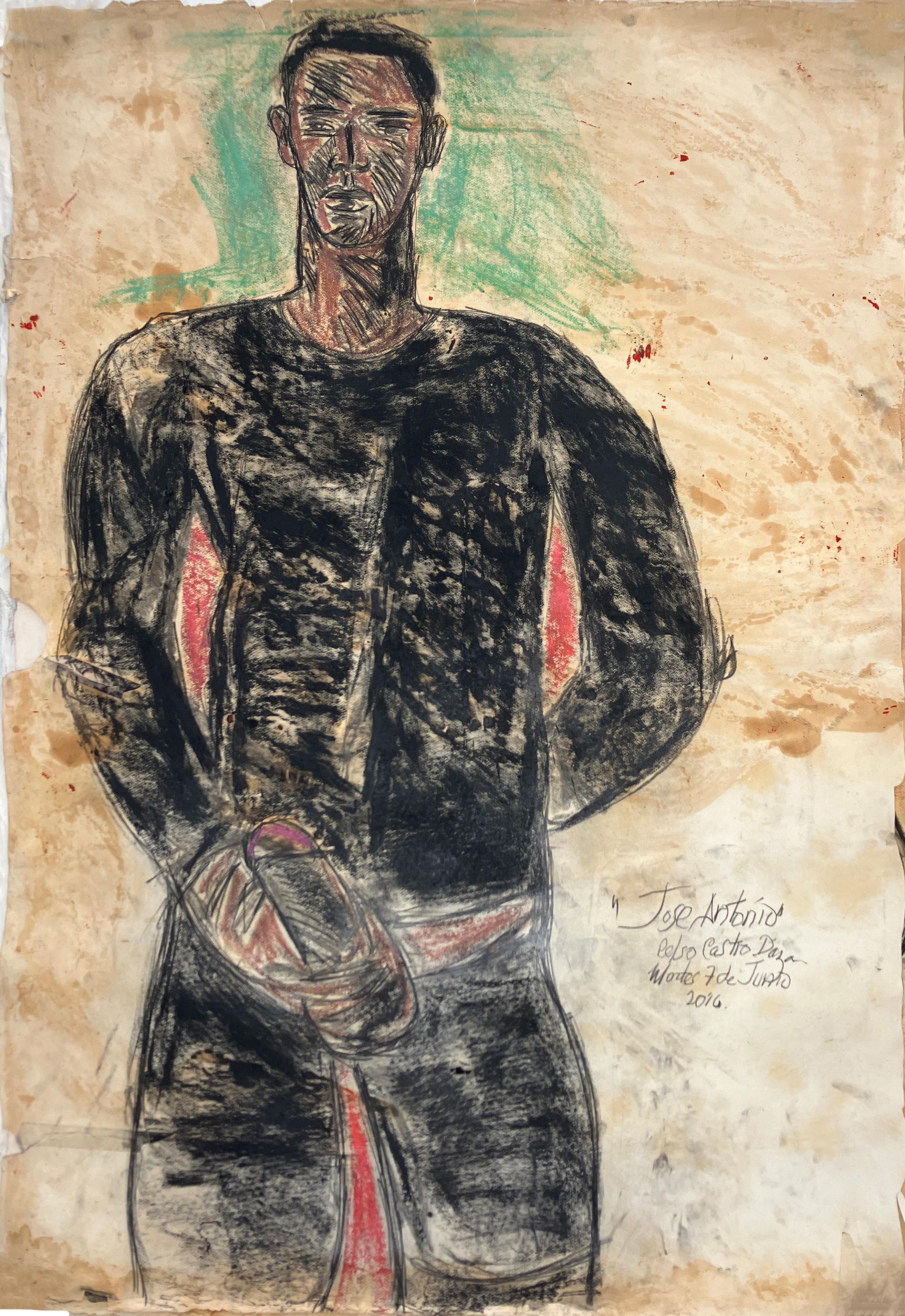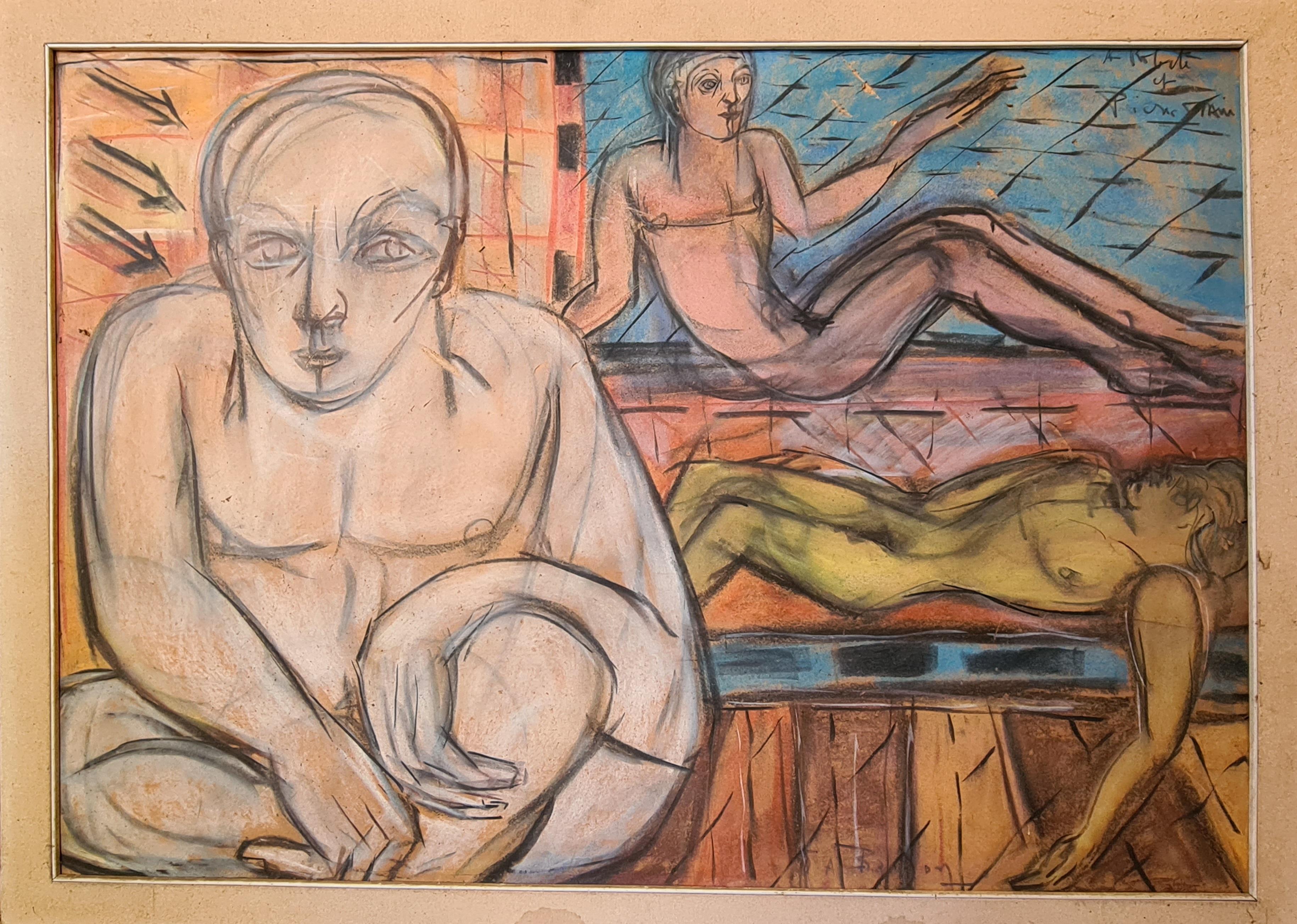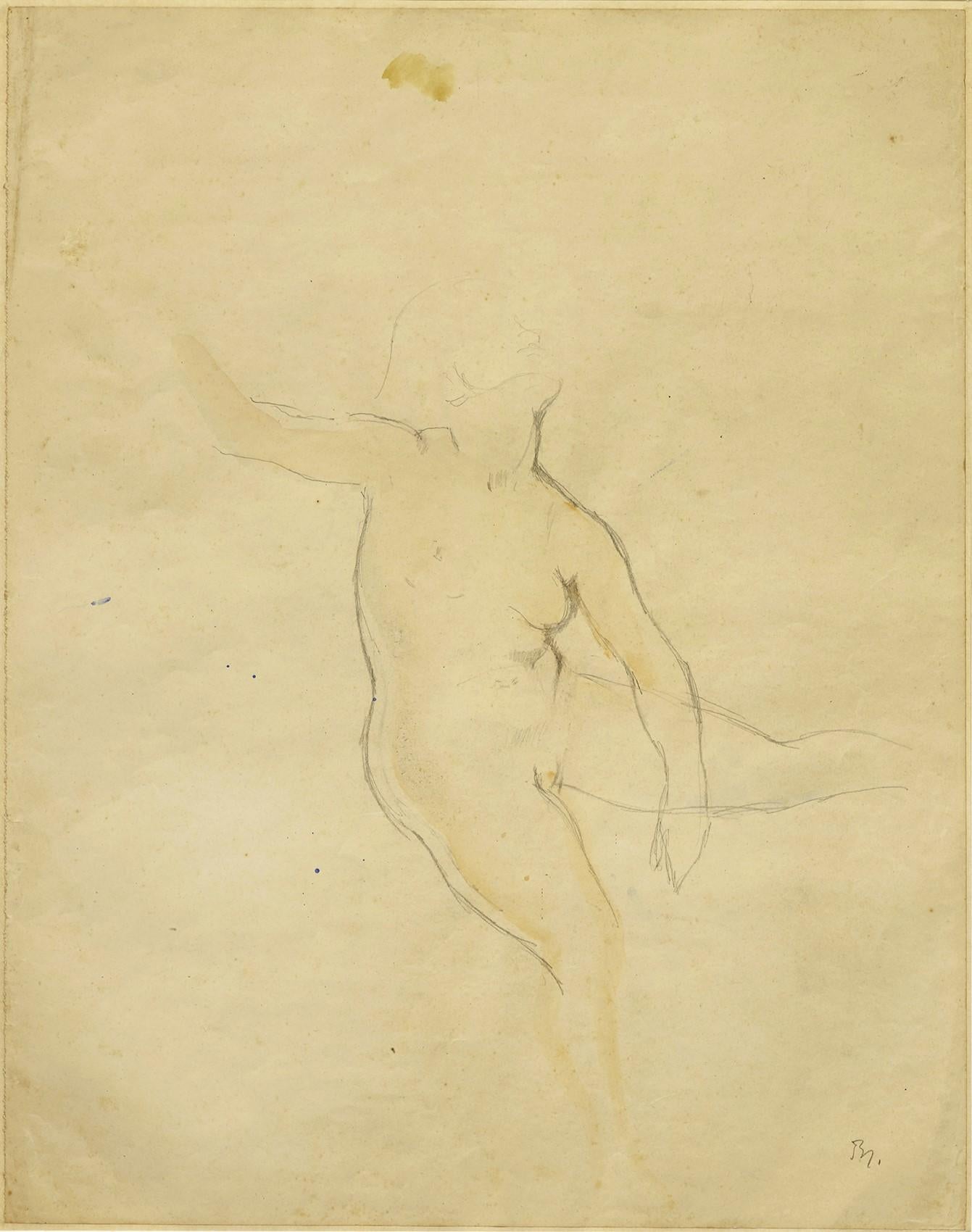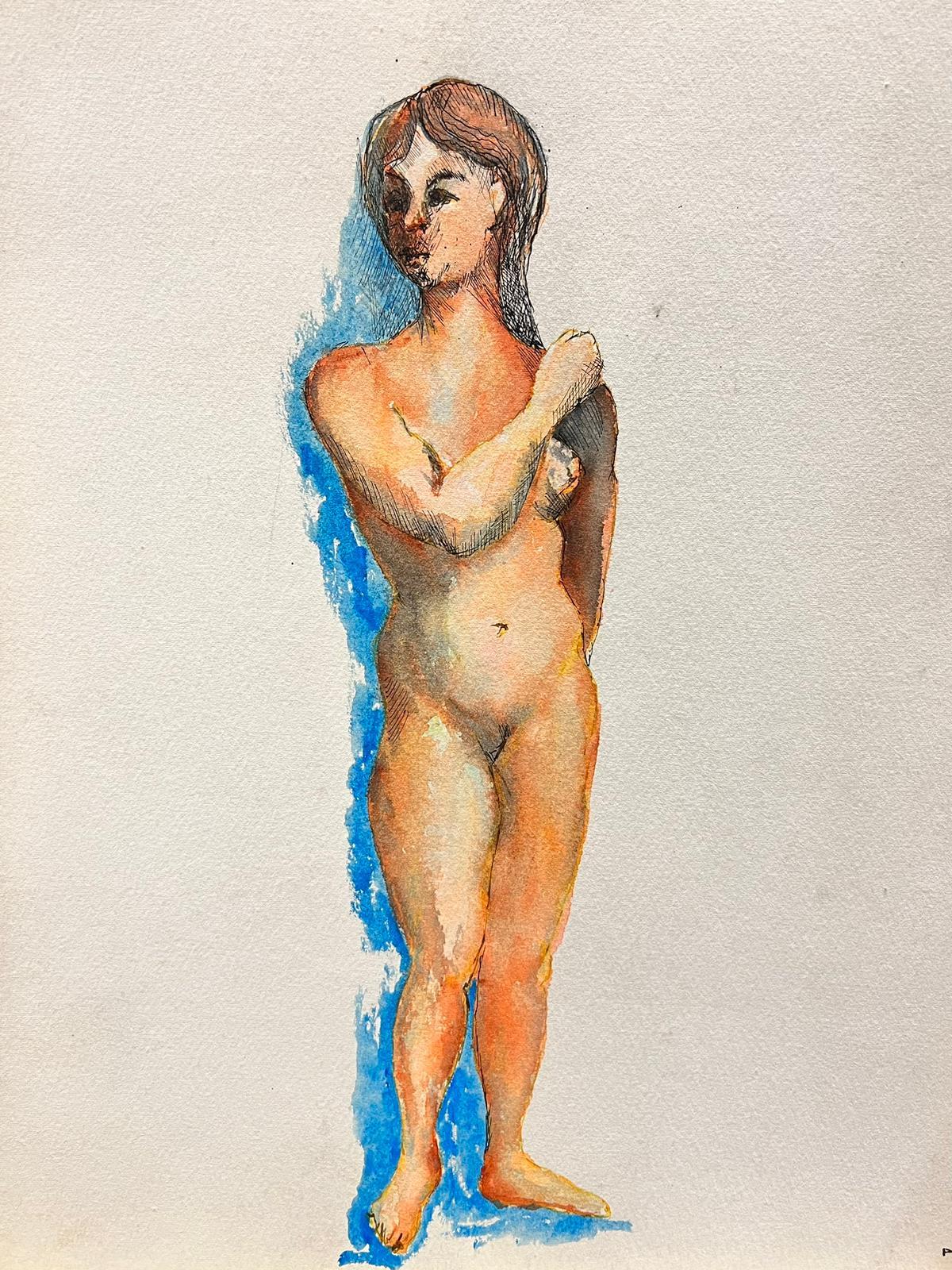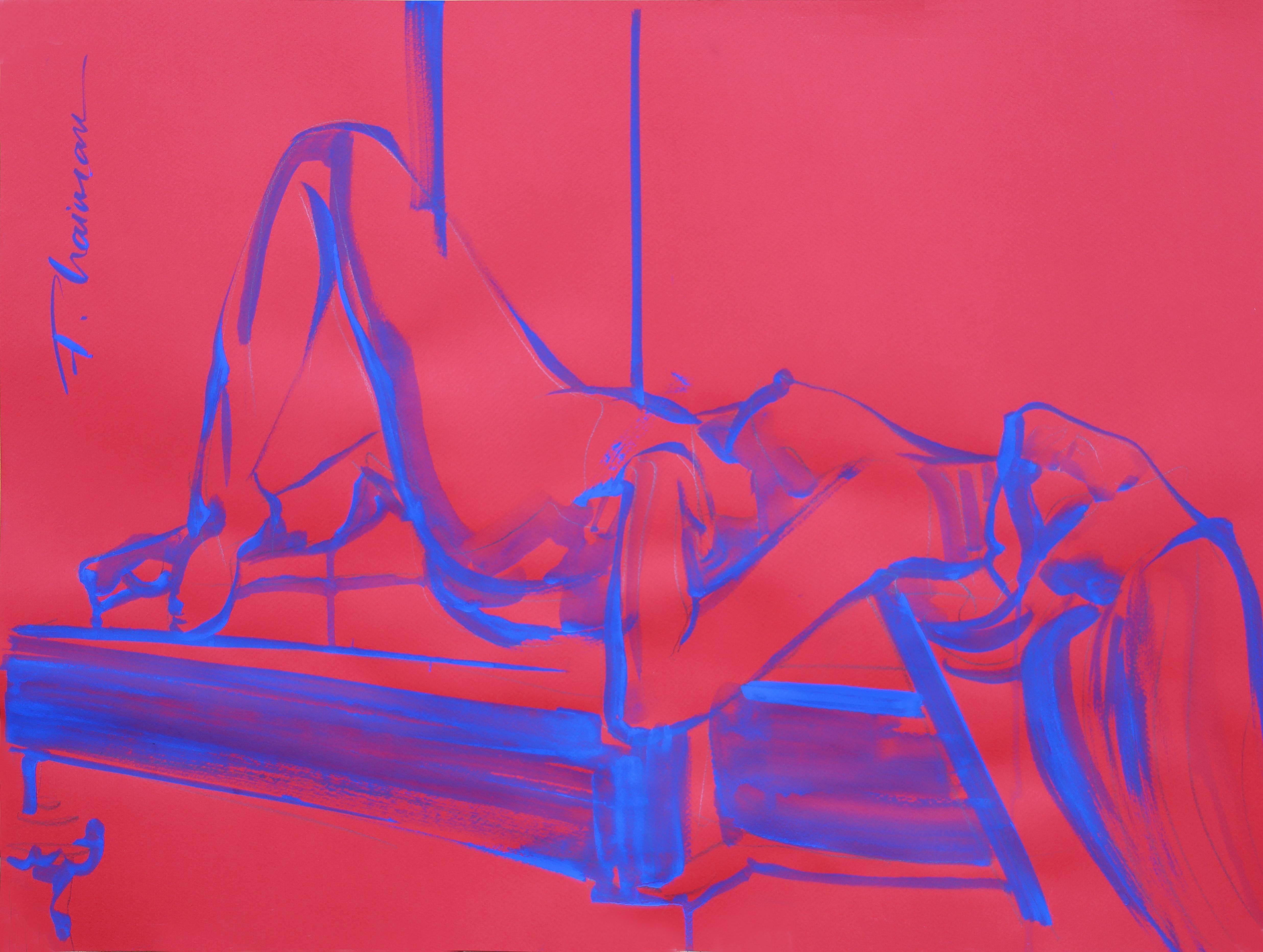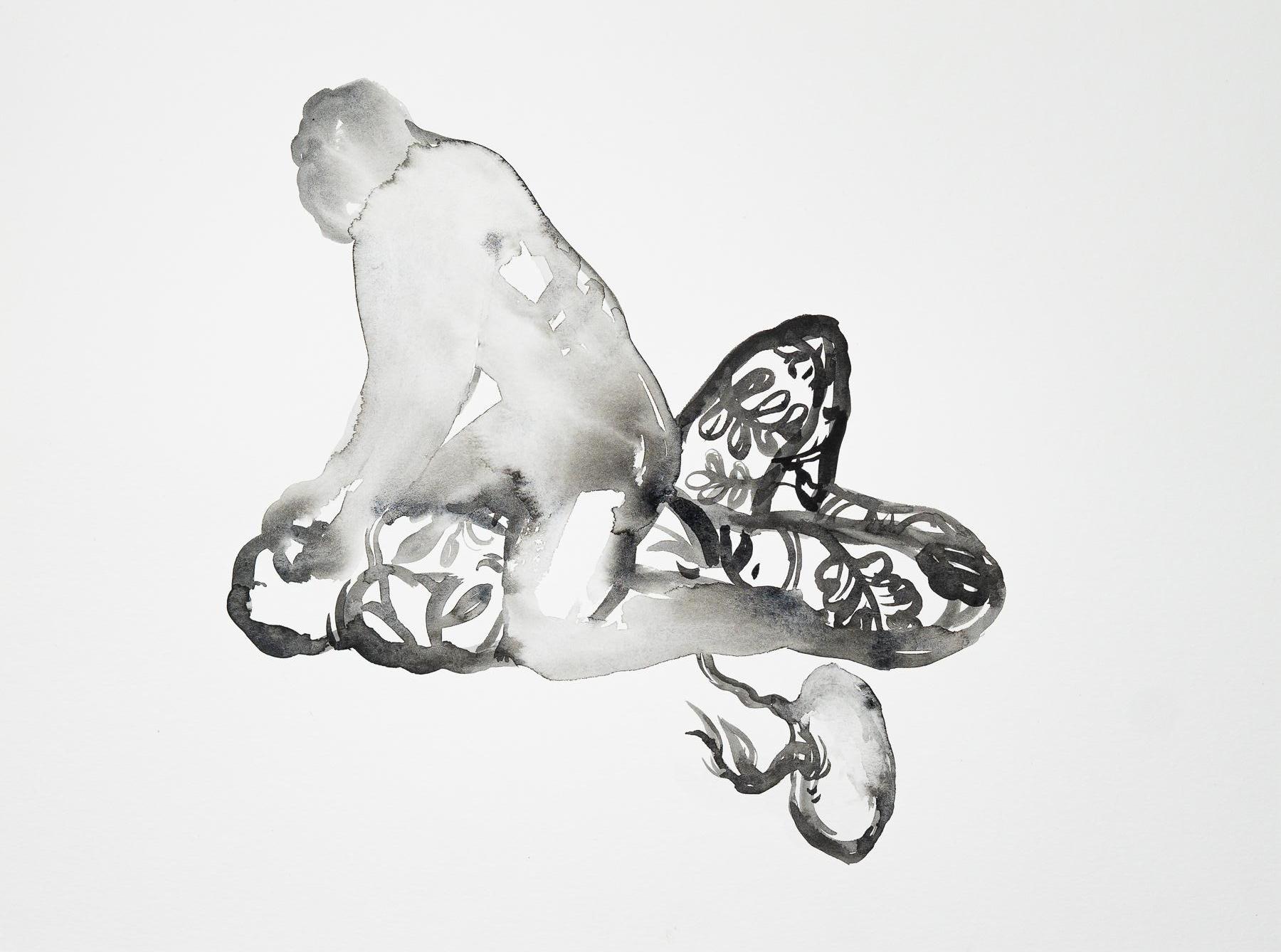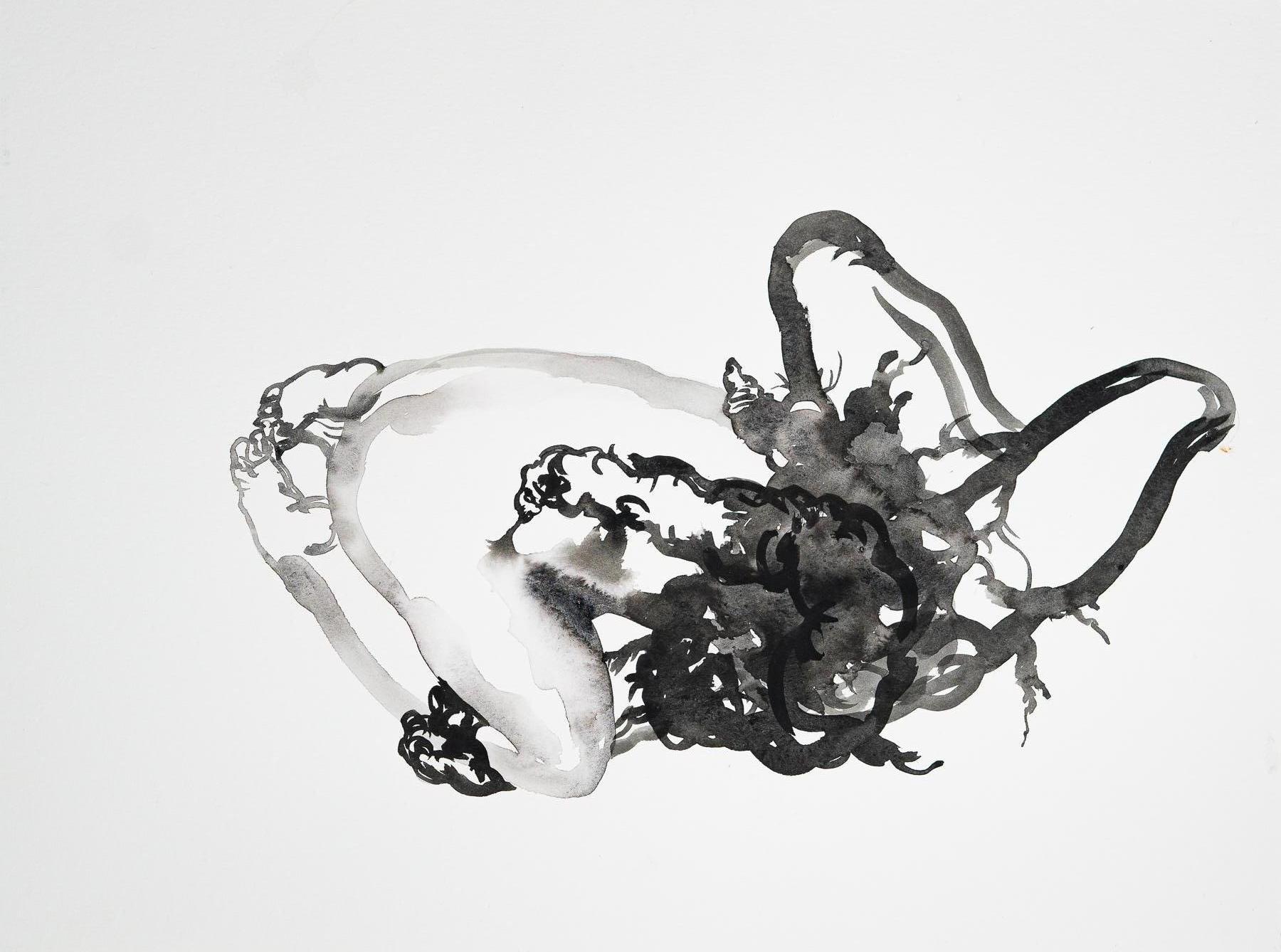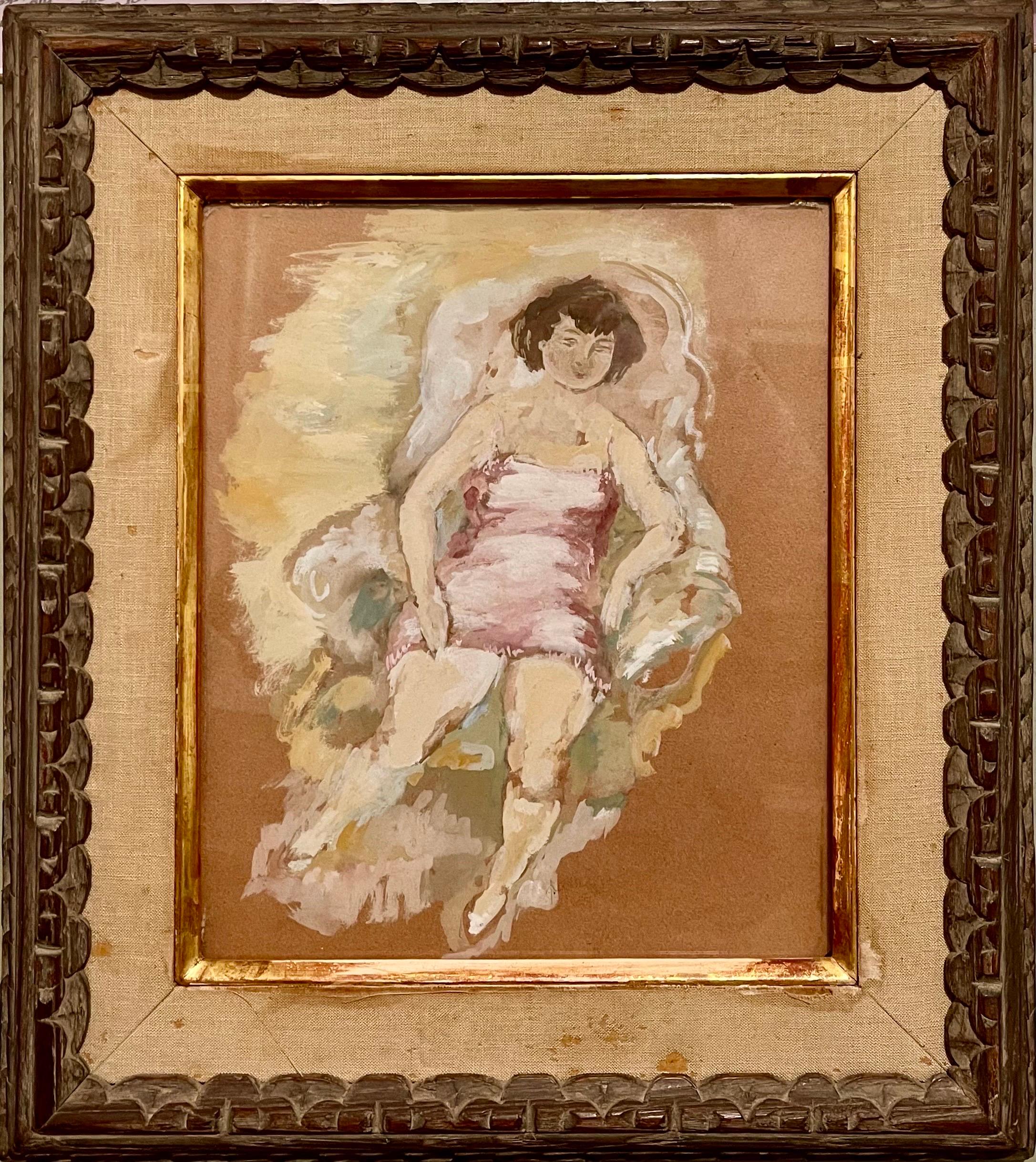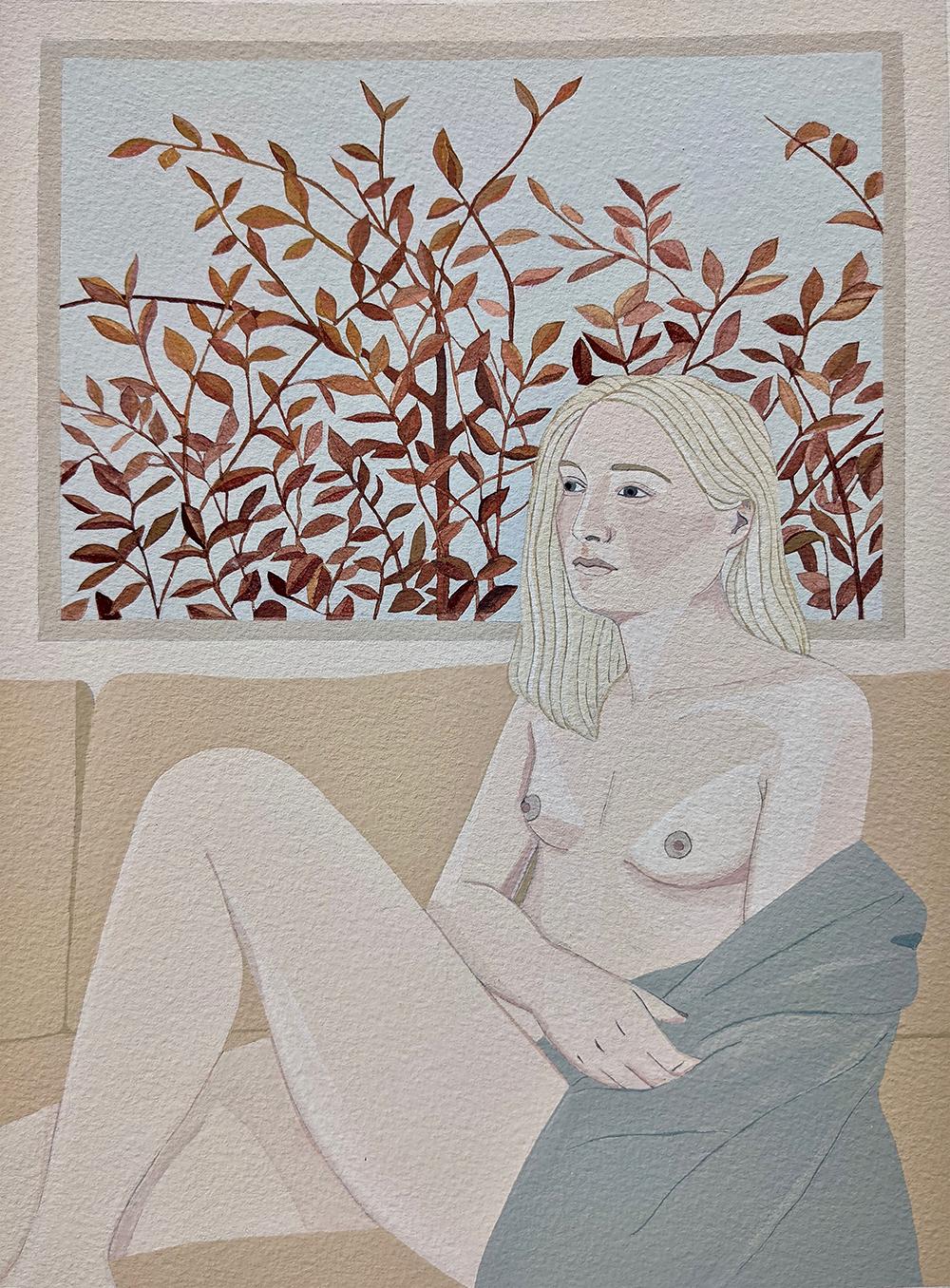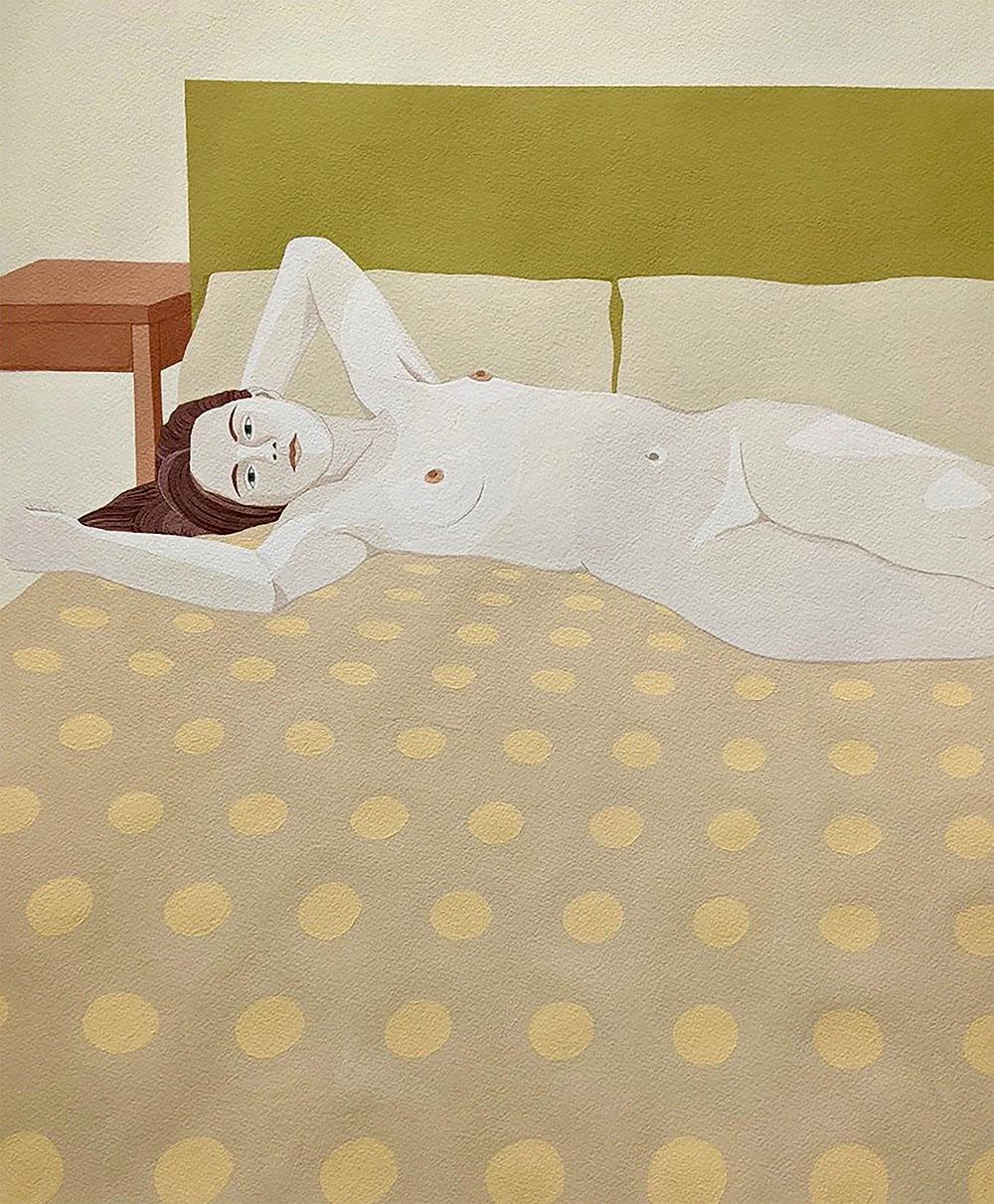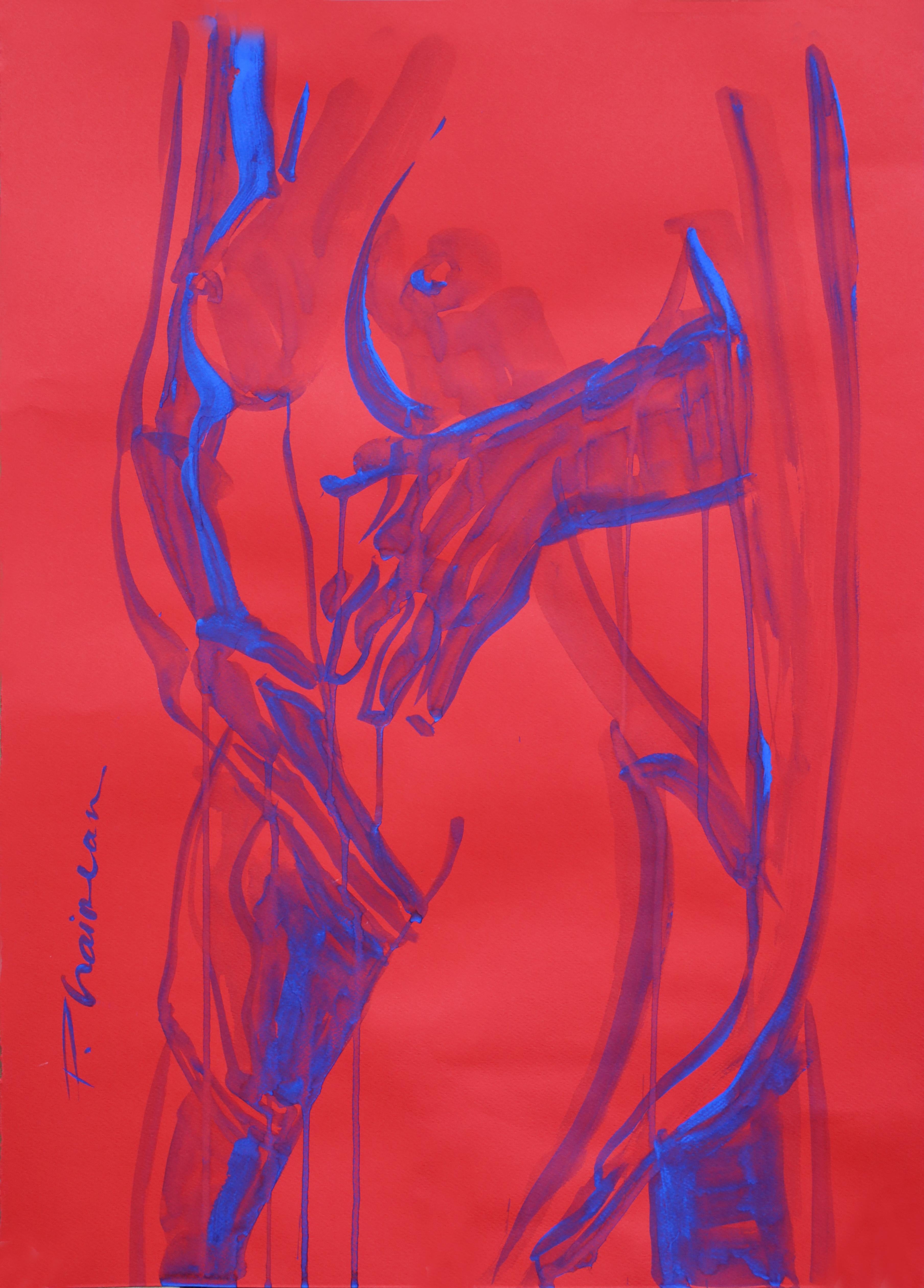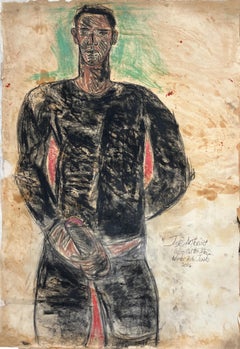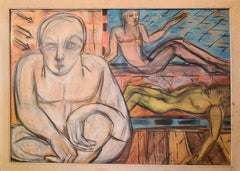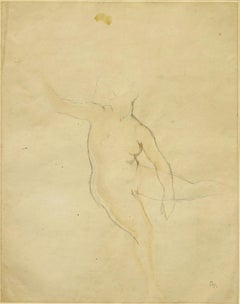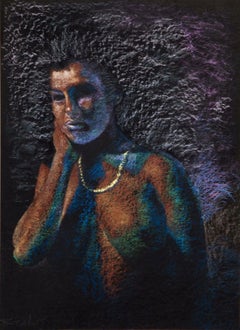
Enchanting Indian Woman, Nude, Pastel Drawing, Black, Purple "In Stock"
Want more images or videos?
Request additional images or videos from the seller
1 of 9
Bikash BhattacharjeeEnchanting Indian Woman, Nude, Pastel Drawing, Black, Purple "In Stock"1995
1995
About the Item
About the Seller
4.9
Vetted Seller
These experienced sellers undergo a comprehensive evaluation by our team of in-house experts.
Established in 2004
1stDibs seller since 2017
118 sales on 1stDibs
Typical response time: 18 hours
More From This SellerView All
- Nude, Drawing of Woman, Charcoal, Pastel, Blue, Red, Indian Artist "In Stock"By Subrata DasLocated in Kolkata, West BengalSubrata Das - Untitled - 10.5 x 8 inches (unframed unmounted ) Charcoal & Pastel on board , 2013 **The work will be shipped unframed (parcel ) If you wish it to be framed and despatched, Kindly contact with the gallery. Style : Subrata Das's works are a poetic representation on Indian Mythological forms, skillfully rendered. His present works representing the divine love of Radha and Krishna, are traditional in subject yet contemporary in his use technique. About the Artist & his work : Born : 1967, Kolkata. Education: 3 Years Foundation Course under the guidance of eminent artists Mr. Shuvaprasanna from College of Visual Arts, Kolkatta. Selected Solo Exhibitions : 2008 - Kanvas Art Gallery, Kolkata. 2005 - Art Walk, Oberoi Hotel, Mumbai. 2002 - Academy of Fine Arts, Kolkata & Chitrakoot Gallery, Kolkata. 2001-02 - Standard Chartered Grindlays Gallery, Kolkata. 1997 - ABN-Amro Gallery, Kolkata 1996 - Gallery Aurobindo, New Delhi. 1995 - Sponsored by RPG Enterprise at Academy of Fine Arts, Kolkata Selected Group Exhibitions : 2008 - 'Shiksha 08', organized by Delhi Friends Round Table at New Delhi; 'Summer Show', Idiyas Gallery, Kolkata & 'Monsoon Show', Master Collection, Kolkata. 2007 - ‘Vibrant Hues’, Kanvas Art Gallery, Kolkata; ‘Facts of Life’, Sop. Gallery One, Gurgaon; ‘Colors 2007’, organized by Art Land at Majestic Hotel, Dubai & ‘Art Fair India -07’, organized by Hindustan Times and Habiart Foundation, Kolkata. 2006-07 - ‘Essence of Bengal Art’, presented by Group Fifty, New Delhi & ‘Art for Concern’, organized by Right Lines Art...Category
2010s Contemporary Nude Paintings
MaterialsPastel, Charcoal, Board
- Nude Women, Charcoal & Pastel on Board, Blue, Black colors "In Stock"By Subrata DasLocated in Kolkata, West BengalSubrata Das - Untitled - 8 x 10.5 inches (unframed unmounted ) Charcoal & Pastel on board , 2013 **Free shipping **The work will be shipped unframed (parcel ) If you wish it to be framed and despatched, Kindly contact with the gallery. Style : Subrata Das's works are a poetic representation on Indian Mythological forms, skillfully rendered. His present works representing the divine love of Radha and Krishna, are traditional in subject yet contemporary in his use technique. About the Artist & his work : Born : 1967, Kolkata. Education: 3 Years Foundation Course under the guidance of eminent artists Mr. Shuvaprasanna from College of Visual Arts, Kolkatta. Selected Solo Exhibitions : 2008 - Kanvas Art Gallery, Kolkata. 2005 - Art Walk, Oberoi Hotel, Mumbai. 2002 - Academy of Fine Arts, Kolkata & Chitrakoot Gallery, Kolkata. 2001-02 - Standard Chartered Grindlays Gallery, Kolkata. 1997 - ABN-Amro Gallery, Kolkata 1996 - Gallery Aurobindo, New Delhi. 1995 - Sponsored by RPG Enterprise at Academy of Fine Arts, Kolkata Selected Group Exhibitions : 2008 - 'Shiksha 08', organized by Delhi Friends Round Table at New Delhi; 'Summer Show', Idiyas Gallery, Kolkata & 'Monsoon Show', Master Collection, Kolkata. 2007 - ‘Vibrant Hues’, Kanvas Art Gallery, Kolkata; ‘Facts of Life’, Sop. Gallery One, Gurgaon; ‘Colors 2007’, organized by Art Land at Majestic Hotel, Dubai & ‘Art Fair India -07’, organized by Hindustan Times and Habiart Foundation, Kolkata. 2006-07 - ‘Essence of Bengal Art’, presented by Group Fifty, New Delhi & ‘Art for Concern’, organized by Right Lines Art...Category
2010s Contemporary Nude Paintings
MaterialsPastel, Charcoal, Board
- Erotic Series II, Nude Drawing, Female, Ink on Magazine paper "In Stock"By Sunil DasLocated in Kolkata, West BengalSunil Das - Erotic Series II - 9 x 7 inches (unframed size) Ink on Magazine Paper Inclusive of shipment in ready to hang form. Figures, female torsos in frontal nudity, a crouching ...Category
2010s Modern Nude Drawings and Watercolors
MaterialsInk, Magazine Paper, Paper
- Erotic Series IV, Reversible, Nude, Pen & Ink on Paper by Sunil Das "In Stock"By Sunil DasLocated in Kolkata, West BengalSunil Das - Erotic Series IV - 14 x 10.5 inches (unframed size) Reversible, Pen & Ink on Paper Inclusive of shipment in ready to hang form. Sunil Das (1939-2015) was a Master Modern...Category
Early 2000s Modern Nude Drawings and Watercolors
MaterialsInk, Pen, Paper
- Making Love Series I, Nude Drawing, Pen & Ink Paper Pasted on Board "In Stock"By Sunil DasLocated in Kolkata, West BengalSunil Das - Making Love Series I - 9 x 7 inches (unframed size) Pen and Ink on Paper Pasted on Board Shipment without frame . Sunil Das (1939-2015) was a Master Modern Indian Artist...Category
2010s Modern Nude Paintings
MaterialsInk, Board, Pen, Paper
- Nude Woman, Watercolor Painting, Green & Blue by Master Indian Artist "In Stock"By Kartick Chandra PyneLocated in Kolkata, West BengalKartick Chandra Pyne - Untitled - 24 x 18 inches (unframed size) Watercolor on thick imported paper Inclusive of shipment in roll form. Style : After graduating from the Government ...Category
Early 2000s Modern Nude Drawings and Watercolors
MaterialsWatercolor, Paper
You May Also Like
- Jose antonio, Martes 7 de julio, Figurative paintingBy Celso José Castro DazaLocated in Miami Beach, FLJose antonio, Martes 7 de julio 2016, by Celso Castro Crayon Pastel on archival paper Image size: 60 H in. x 38 in. W Unframed On The back of the painting: Abstract, 1986 Pencil a...Category
1990s Contemporary Figurative Paintings
MaterialsPastel, Crayon, Archival Paper
- Futurist, Novecento Italiano, Mid Century Italian Painting, Figures at the BathsBy Anselmo BucciLocated in Cotignac, FRMid 20th Century Italian Futurist, Novecento Italiano, work on paper, signed bottom right and with dedication top right (see photos). The subject is bathers enjoying the delights of a spa and sauna with colourful tiling to the background. The classical figures languorously positioned in repose but the central 'white' figure in stark contrast. The play on colours gives the work a vibrancy. The drawing is possibly a preparatory sketch for a larger work or mural. A vibrant, exciting and colourful work incorporating the styles of Futurism and the Novecento Italiano movement and with the influences or artists such as Anselmo Bucci, Adami, Jean Helion, Maryan, Achille Funi and Ugo Guidi. Anselmo Bucci was born in 1887 in Fossombrone in the district of Pesaro. Even though he studied Classics, right from a tender age he showed a talent for drawing and, when his parents moved near to Florence, he was taught by the artist Francesco Salvini. In 1904 the family settled in Monza and so the boy was able to study for a year at the Accademia di Belle Arti di Brera, but he did not follow up this educational experience and in 1906 he left Italy for Paris where he came into contact with the Parisian avant-garde, met fellow Italian artists such as Severini and Modigliani, and made friends with Picasso, Utrillo and Apollinaire. In 1907 he showed a painting at the Salon, but these Parisian years were most important for his love of engraving techniques – etching and dry point that enabled him to fully develop his themes characterised by movement. On the outbreak of war in 1915 he returned to Italy and he enlisted in the same battalion as several Futurist artists such as Martinetti, Boccioni, Sant’Elia and Carlo Erba. In 1914 he won the silver medal at the Mostra dell’Incisione (Exhibition of Engravings) at Florence. In 1917 in Paris he published pictures of war scenes entitled “Croquis du Front Italien”. In 1919 he printed twelve lithographs entitled “Finis Austriae” again showing events from the war. At the end of the war he lived between Milan and Paris and he dedicated his time completely to his art with personal exhibitions, exhibiting at all the most important Italian and French shows, in Belgium, Holland and England. In 1922, he established the group “Movimento del Novecento”, (Novecento Italiano), (20th century Movement) a joint venture with the artists Sironi, Funi, Oppi, Malerba, Dudreville and Marussig. Their aim was to return to figurative art in contrast with the growing extremism of the Avant-gardists. In 1925 he worked on the illustration of the first edition of Kipling’s The Jungle Book producing eight dry point plates. In the early 30’s he lived in Bucci, Trieste, where he worked on the furnishing of the steamships for the Trieste Navigazione Libera, at the same time he continued to work on many book illustrations. During the second European war he adapted to being a war artist recording the events of the war as he had done previously. Indeed the engravings depicting battles of the Marines and the Air Force belong to this period. In 1945, following the bombing of his house in Milan, he returned to Monza to his father’s home where he remained until his death. Futurism was an Italian art movement of the early twentieth century that aimed to capture in art the dynamism and energy of the modern world. Futurism was launched by the Italian poet Filippo Tommaso Marinetti in 1909. On 20 February he published his Manifesto of Futurism on the front page of the Paris newspaper Le Figaro. Among modernist movements futurism was exceptionally vehement in its denunciation of the past. This was because in Italy the weight of past culture was felt as particularly oppressive. In the Manifesto, Marinetti asserted that ‘we will free Italy from her innumerable museums which cover her like countless cemeteries’. What the futurists proposed instead was an art that celebrated the modern world of industry and technology: We declare…a new beauty, the beauty of speed. A racing motor car…is more beautiful than the Victory of Samothrace. (A celebrated ancient Greek sculpture in the Louvre museum in Paris.) Futurist painting used elements of neo-impressionism and cubism to create compositions that expressed the idea of the dynamism, the energy and movement, of modern life. Chief artists associated with futurism were Giacomo Balla, Umberto Boccioni, Gino Severini. After the brutality of the first world war, many artists rejected the avant-garde notions of futurism and other pre-war movements, by using more traditional and reassuring approaches, a phenomenon described as the ‘return to order’. Novecento Italiano was founded by Anselmo Bucci (1887–1955), Leonardo Dudreville (1885–1975), Achille Funi, Gian Emilio Malerba (1880–1926), Pietro Marussig, Ubaldo Oppi, and Mario Sironi. Motivated by a post-war "call to order", they were brought together by Lino Pesaro, a gallery owner interested in modern art, and Margherita Sarfatti, a writer and art critic who worked on Italian dictator Benito Mussolini's newspaper, The People of Italy (Il Popolo d'Italia). Sarfatti was also Mussolini's mistress. The movement was officially launched in 1923 at an exhibition in Milan, with Mussolini as one of the speakers. The group was represented at the Venice Biennale of 1924 in a gallery of its own, with the exception of Oppi, who exhibited in a separate gallery. Oppi's defection caused him to be ejected from the group, which subsequently split and was reformed. The new Novecento Italiano staged its first group exhibition in Milan in 1926. Several of the artists were war veterans; Sarfatti had lost a son in the war. The group wished to take on the Italian establishment and create an art associated with the rhetoric of fascism. The artists supported the fascist regime and their work became associated with the state propaganda department, although Mussolini reprimanded Sarfatti for using his name and the name of fascism to promote Novecento. The name of the movement (which means 1900s) was a deliberate reference to great periods of Italian art in the past, the Quattrocento and Cinquecento (1400s and 1500s). The group rejected European avant garde art and wished to revive the tradition of large format history painting in the classical manner. It lacked a precise artistic programme and included artists of different styles and temperament, for example, Carrà and Marini. It aimed to promote a renewed yet traditional Italian art. Sironi said, “if we look at the painters of the second half of the 19th century, we find that only the revolutionary were great and that the greatest were the most revolutionary”; the artists of Novecento Italiano “would not imitate the world created by God but would be inspired by it”. Despite official patronage, Novecento art did not always have an easy ride in Fascist Italy. Mussolini was personally uninterested in art and divided official support among various groups so as to keep artists on the side of the regime. Opening the exhibition of Novecento art in 1923 he declared that “it is far from my idea to encourage anything like a state art. Art belongs to the domain of the individual. The state has only one duty: not to undermine art, to provide humane conditions for artists, to encourage them from the artistic and national point of view." The movement was in competition with other pro-Fascist movements, especially Futurism and the regionalist Strapaese movement. Novecento Italiano also met outright opposition. Achille Starace, the General Secretary of the Fascist Party, attacked it in the Fascist daily press and there was virulent criticism of its “un-Italian" qualities by artists and critics. In the 1930s, a group of professors and students at the Accademia di Brera established an opposition group to Novecento Italiano. Among them was the director of the academy Aldo Carpi, and students Afro, Aldo Badoli, Aldo Bergolli, Renato Birolli, Bruno Cassinari, Cherchi, Alfredo Chighine, Grosso, Renato Guttuso, Dino Lanaro, Giuseppe Migneco, Mantica, Ennio Morlotti, Aligi Sassu, Ernesto Treccani, Italo Valenti, and Emilio Vedova (and later Giuseppe Ajmone...Category
Mid-20th Century Futurist Figurative Paintings
MaterialsPaper, Pastel, Crayon, Pencil
- Study for "Getting up" – 1955, a preparatory drawing by Balthus (1908 -2001)By Balthus (Balthasar Klossowski de Rola)Located in PARIS, FRIn 1955, as he was residing at the Château de Chassy in the Morvan for two years, Balthus created a large painting entitled "Getting up". Balthus was inspired for this painting by t...Category
1950s Modern Nude Drawings and Watercolors
MaterialsWatercolor, Pencil
- 1950's Modernist/Cubist Painting Nude Female Portrait With Blue ShadowBy Bernard LabbeLocated in Cirencester, GloucestershireFrench Nude by Bernard Labbe (French mid 20th century) original gouache on paper size: 14 x 10.5 inches condition: very good and ready to be enjoyed pro...Category
Mid-20th Century Modern Figurative Paintings
MaterialsGouache
- BLESSED original blue ultramarine nude by Paula Craioveanu inspired by MatisseBy Paula CraioveanuLocated in Forest Hills, NY"Blessed" Part of "Nude in Interior" series. Original work on colored paper, with blue ultramarine tempera on red colored paper, inspired by Matisse. Size 2is 7.5x19.5in / 70x50c...Category
2010s Contemporary Nude Drawings and Watercolors
MaterialsPaper, Tempera
- Male Nude - Contemporary Figurative Watercolor Painting, New ExpressionismBy Maciej OlekszyLocated in Salzburg, ATThe artwork on paper will be sent unframed to you. Maciej Olekszy was born in 1982, Poland. Graduated from the Academy of Fine Arts in Poznan, Poland in 2007. Faculty of Painting i...Category
2010s Contemporary Figurative Paintings
MaterialsPaper, Watercolor
Recently Viewed
View AllMore Ways To Browse
Children Playing Oil Painting
Oil Painting Children Playing
Oil Paintings Children Playing
Painting African Women
Keith Haring 1988
African American Family
Spanish King
Abstract Nude Female
Woman In A Blue Dress
Doller Painting
Womens Crosses
Peace Sign Hand
Orientalism Oil
Oriental Oil
Jean Michel Basquiat Book
17th Century Dutch Masters
The Temptations Of
1920s Womens
